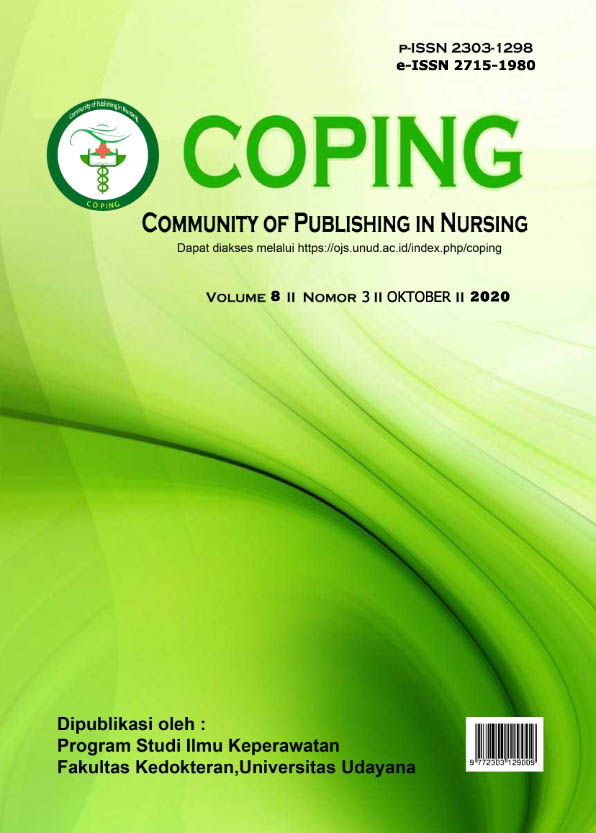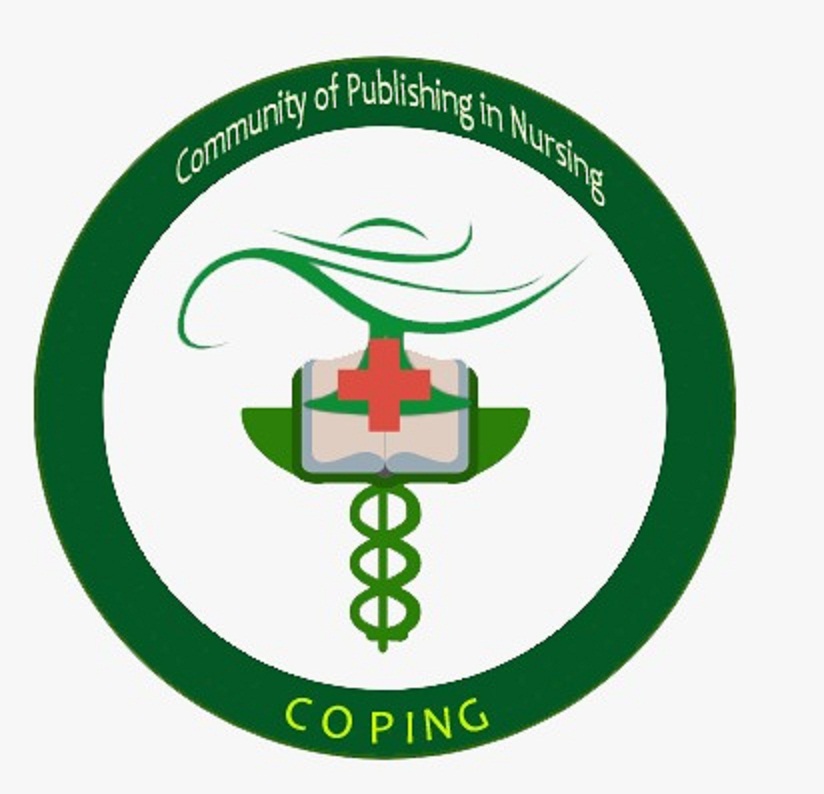STUDI LITERATUR : PERBANDINGAN PENERAPAN TEKNIK TEPID WATER SPONGE DAN KOMPRES HANGAT UNTUK MENURUNKAN SUHU TUBUH PADA ANAK YANG MENGALAMI KEJANG DEMAM
Abstract
Background: The prevalence of febrile seizures in children under five years of age occurs every year in America, almost as much as 1.5 million and mostly more common in children aged 6 to 36 months (2 years), especially at 18 months of age. The specific symptom of a febrile seizure is hyperthermia. With increased metabolism in the body, oxygen supply to the brain decreases. In sensitive children, febrile seizures will occur. If not resolved immediately, febrile seizures will result in an increase in intra-cranial pressure (ICT) which affects the disruption of nutrient supply (perfusion) to the tissues throughout the body so that growth and development disorders can occur. Purpose: This literature review aims to compare the application of the tepid water sponge technique and warm compresses to reduce body temperature in children with fever. Methods: The method used was a literature review, which collected and analyzed research articles on the application of the Tepid Water Sponge and Warm Compress techniques. Search for articles is carried out through (databases) such as Google scholar or Google scholar using keywords such as "Tepid Water Sponge", "Warm Compress", "Fever Seizure", "Tepid Water Sponge + Fever,". The articles selected are articles published from 2015 to 2020 which can be accessed in full text in pdf format and in Indonesian. Results: Based on descriptions of 6 journals that have been reviewed, it shows that the tepid water sponge technique is more effective than warm compresses in reducing body temperature in children with fever. Conclusion: The tepid water sponge technique is highly recommended to reduce hyperthermia in children with febrile convulsions.
Keywords: Fever Seizures, Hyperthermia, Tepid Water Sponge, Warm Water Compress
Downloads
References
Haryani.S. Adimayanti, Edan Astuti.A.P (2018). Pengaruh Tepid Sponge terhadap Penurunan suhu tubuh pada anak prasekolah yang mengalami demam di RSUD Ungaran. Jurnal keperawatan dan kesehatan masyarakat cendekia utama, 7(1), 44-53
Maharani, Lindya.(2011). Perbandingan efektifitas pemberian kompres hangat dan tepid water sponge terhadap penurunan suhu tubuh balita yang mengalami demam di Puskesmas Rawat Inap Karya Wanita Rumbai Pesisir, Skripsi, Universitas Riau, diakses tanggal 20 Februari 2020, dari https://www.scribd.com/doc/73195543/all-ok.
Maling. B (2012). Pengaruh kompres tepid sponge hangat terhadap penurunan suhu tubuh pada anak umur 1-10 tahun dengan hpertermia (studi kasus di RSUD Tugurejo Semarang). Karya ilmiah, S1 keperawatan, sekolah tinggi ilmu kesehatan Telogorejo
Novikasari, Linawati dkk.(2019). Efektifitas penurunan suhu tubuh menggunakan kompres hangat Dan water tepid sponge dirumah sakit DKT TK IV 02.07.04 bandar lampung. Holistik jurnal kesehatan. Vol 13.No 2. Diakses pada tanggal 20 Februari 2020. https://ejurnalmalahayati.ac.id/index.php/holistic/article/download/1035/pdf.
Pangesti, NA, Atmojo, BSR, Kiki A. (2020). Penerapan Kompres Hangat Dalam Menurunkan Hipertermia Pada Anak Yang Mengalami Kejang Demam Sederhana. Nursing Science Journal (NSJ). Volume 1, Nomor 1, Juni 2020. Akademi Keperawatan Pemkab Purworejo
Reiga, Celso Garcia. De LA. 2010. Espanol, Kessinger Publishing.
Wardiyah, Aryanti. (2016). Perbandingan Efektifitas Pemberian Kompres hangat Dan Tepid Water Sponge Terhadap Penurunan Suhu Tubuh Anak Yang Mengalami Demam Rsud Dr. H. Abdul Moeloek Provinsi Lampung. Jurnal Ilmu Keperawatan. Vol 4. No 1. Diakses pada tanggal 20 februari 2019. https://jik.ub.ac.id/index.php/jik/article/download/101/94.
Yusuf, M dkk. (2014). Pengaruh Pendidikan Kesehatan Tentang Penanganan Kejang Demam Menggunakan Audio Visual Terhadap Tingkat Pengetahuan dan Sikap Ibu dengan Anak Riwayat kejang demam. Jurnal vol 1 no 2 september 2014. Stikes Kesuma Husada Surakarta.1







